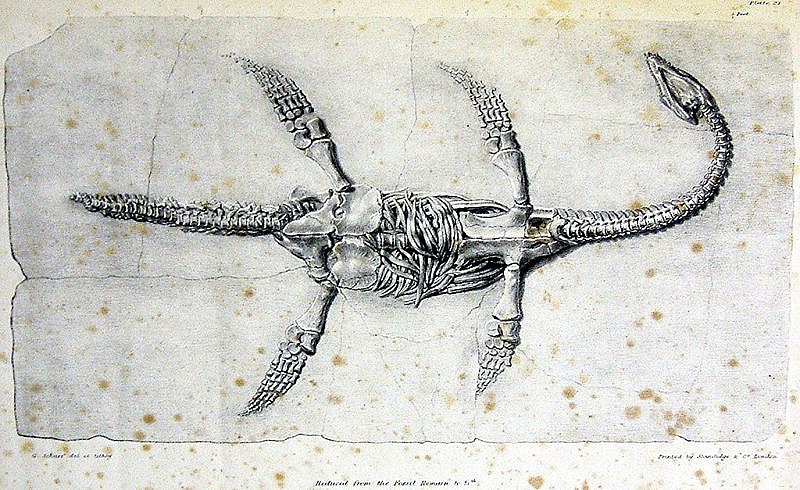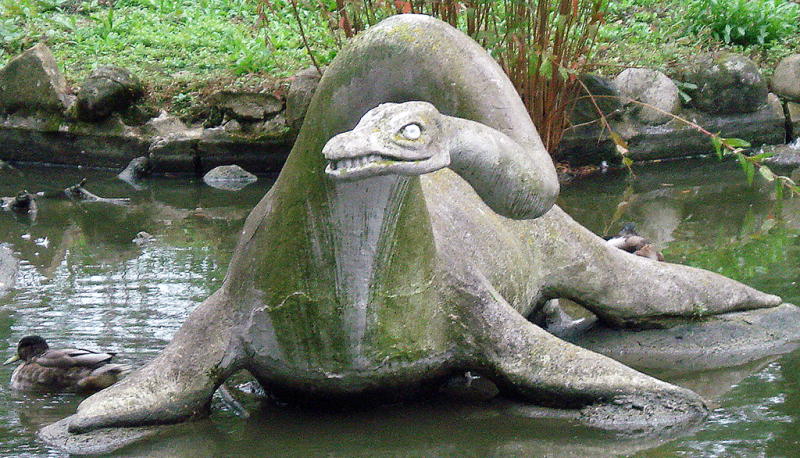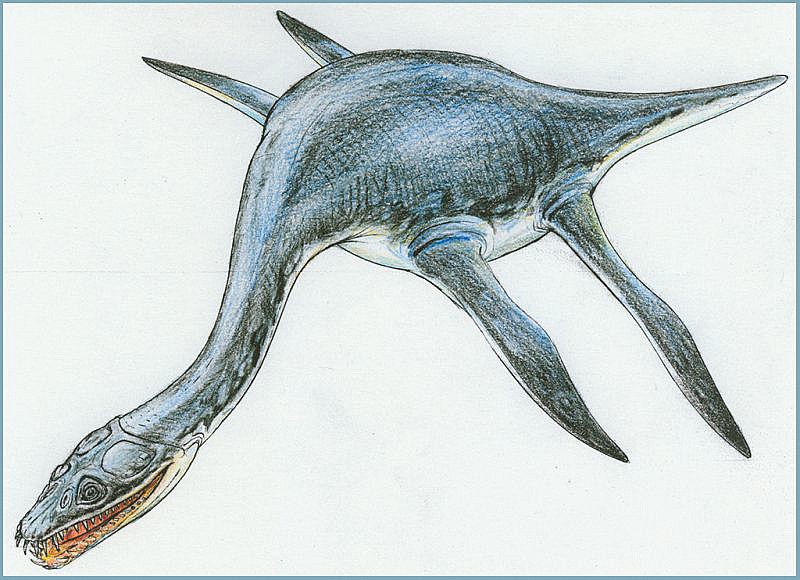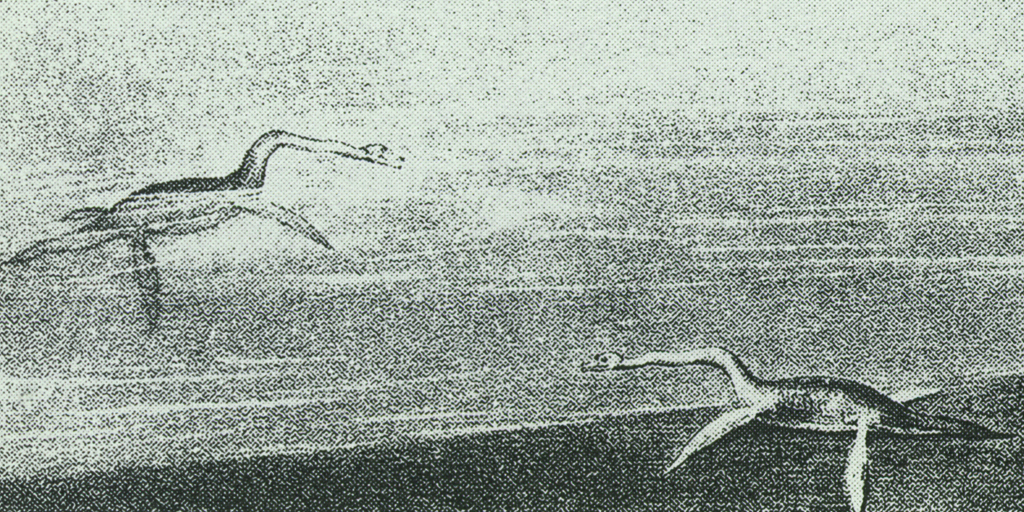Early Plesiosaur Life Reconstructions
Plesiosaurs were typical marine reptiles of the Jurassic and Cretaceous periods that were relatively lifelike depicted even in early scientific literature.
Compare, e.g., the detail from the frontispiece of HAWKINS (1834) above in which only the undulation of the neck and the stay on the beach look somewhat strange.
This was due to the fact that not only – as in the ichthyosaurs – complete plesiosaur skeletons were availabe from the beginning of their discovery onwards showing the entire morphology of those reptiles but also that – as far as we can expect – other than in the ichthyosaurs they had no body parts which were unsupported by hard tissues.

Plesiosaurs were in particular subaqueous or underwater flyers which used both limb pairs for propulsion. Their limbs had converted into flippers and presumably moved performing dorsoventrally asymmetrical strokes like the California sea lion Zalophus californianus today. This otariid pinniped utilises its forelimbs for a modified subaqueous flying style that combines principles of both flying and rowing: a thrust and lift providing downstroke and a more-or-less passive recovery stroke (GODFREY 1984, 1985). Together with the nothosaurs the plesiosaurs can best be addressed as the seals of the Mesozoic era.

A modern illustration of a plesiosaur can be seen below. «Nessie» or the Loch Ness monster of the Scottish Highlands is usually interpreted as a surviving representative of the plesiosaurs. In the second half of the last century «Nessie» irritatingly was scientifically described and named Nessiteras rhombopteryx SCOTT & RINES, 1975 in the journal «Nature«. The explanation was that the animal should be protected by the Conservation of Wild Creatures and Wild Plants Act, 1975, back then passed by the UK Parliament. In reality, of course, «Nessie» is a fake and does not exist. Therefore, the binominal name Nessiteras rhombopteryx is a nomen nudum or unavailable name and has no influence on taxonomy.
GODFREY, S.J. (1985): Additional observations of subaqueous locomotion on the California sea lion (Zalophus californianus). – Aquatic mammals 11 (2): 53-57.
HAWKINS, T. (1834): Memoirs of ichthyosauri and plesiosauri, extinct monsters of the ancient earth with 28 plates copied from specimens in the author’s collection of fossil organic remains, 51 pp.
HAWKINS, T. (1840): The book of the great sea-dragons, Ichthyosauri and Plesiosauri, [gedolim taninim] gedolim taninim, of Moses. Extinct monsters of the ancient earth, 27 pp.
O’KEEFE, F.R. & CHIAPPE, L.M. (2011): Viviparity and k-selected life history in a Mesozoic marine plesiosaur (Reptilia, Sauropterygia). – Science 333: 870-873.
SCOTT, P. & RINES, R. (1975): Naming the Loch Ness monster. – Nature 258: 466-468.


